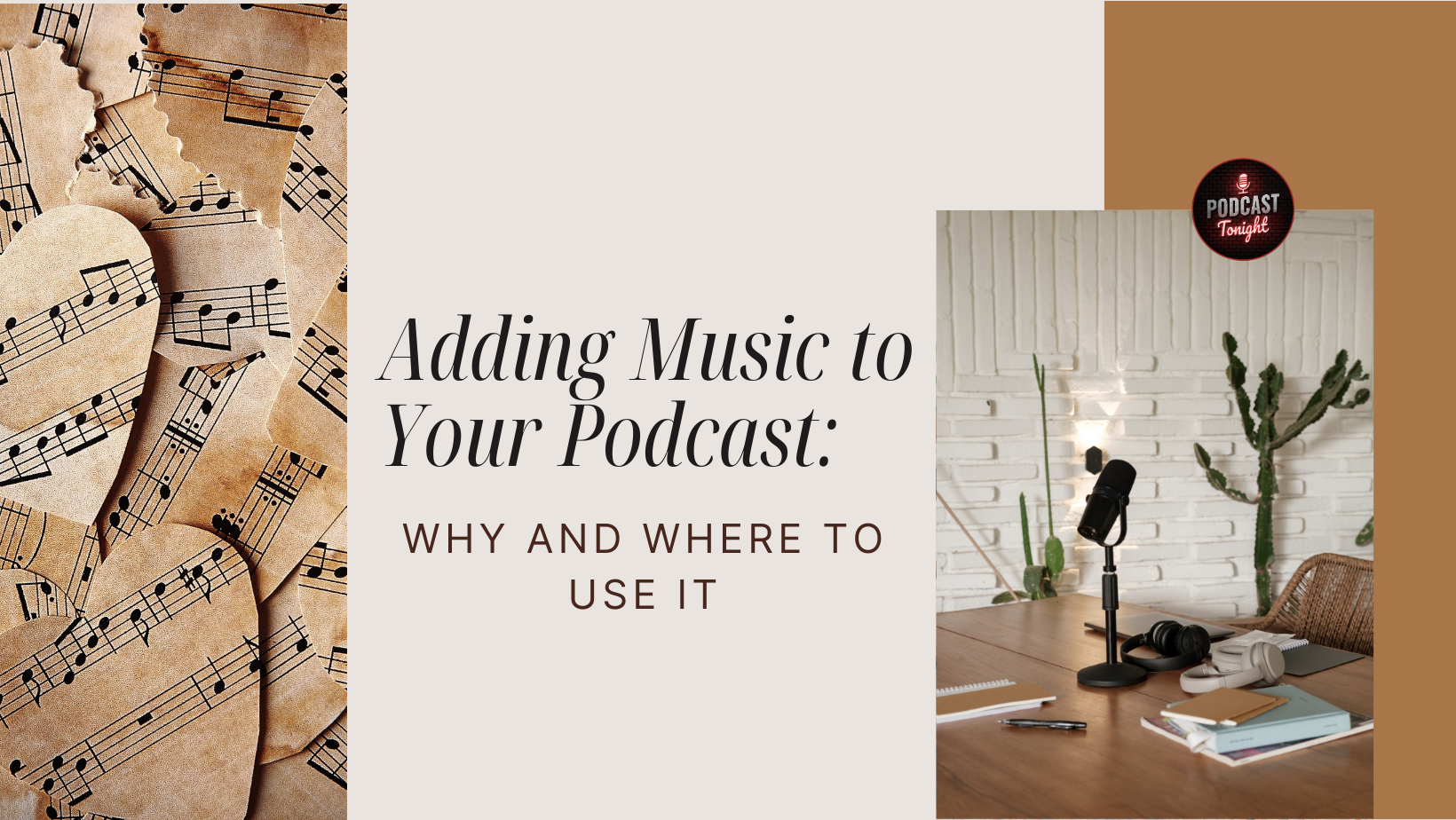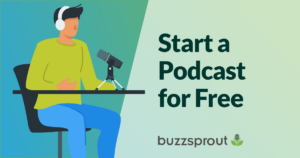Music plays an integral role in the world of podcasting, often elevating the overall listening experience to a whole new level. Listeners can't see yo
Music plays an integral role in the world of podcasting, often elevating the overall listening experience to a whole new level. Listeners can’t see your expressions or visual cues, they only perceive the audio. Just like well-written scripts and engaging dialogues, background music possesses the power to augment the mood, intensify emotions, and complement aural storytelling efforts. But knowing when and how to incorporate music into your podcast can be a daunting task.
This article delves into the importance of music in podcasts and guides you on the right places to incorporate music in your show. The following sections will detail each of these advantages, shedding light on the remarkable influence of music in podcasts.
Why Add Music To Your Podcast
Sets the Tone
Music is a powerful tool that can be used to set the mood and tone of your podcast. Whether you’re aiming for a mysterious, relaxed or comedic atmosphere, music helps in conveying these emotions to your listeners. It creates a desired atmosphere, enhancing the overall listening experience.
Helps with Transitions
Podcasts often involve continuous talking which can become monotonous over time. Here’s where music comes into play – it adds variety and introduces new sonic textures into your podcast. Musical cues signal transitions between topics or segments, making them more interesting and engaging for listeners.
Adds Entertainment Value
Without any form of sound effects or music, podcasts can seem dry and dull. By adding well-timed songs or sound effects strategically throughout the show, you add entertainment value making it more enjoyable for listeners.
Improves Branding
With numerous podcasts available today, having unique background music will help yours stand out from others thus becoming more memorable and recognizable to audiences over time.
The consistent use of specific tunes like jingles establishes an audio brand identity for your podcast that becomes associated with its style and personality; much like how we associate certain theme songs with our favorite TV shows.
Where To Use Music
Intro/Outro
The beginning and the end parts of your podcast are crucial. They can help attract new listeners, keep them engaged, and even generate income for you.
In the introduction part of your podcast, it’s important to greet new listeners and give a brief description of what your show is about. You can use intro music or a unique jingle that matches with the vibe of your show to set the atmosphere. This will instantly make listeners interested in your content within just a few seconds.
Introductory audio doesn’t need to be long – only a couple seconds will do. It sets up expectations for what follows next in terms of mood and tone.
Similarly, you should also focus on using outro music at the end of each episode as this helps maintain listener engagement after they’ve finished listening to an episode. The ending part is where you ask listeners to leave reviews for your show, subscribe to it or support it by buying merchandise. Outro audio should wrap up everything neatly with positive vibes before moving on to another episode.
The music used in both segments plays an essential role in developing an emotional connection between you and your audience. Introductory music makes listeners feel welcome while outro music provides a comfortable conclusion instead of abruptly ending the show.
Transitions and segues
Podcast creators often use music to divide their episodes into different segments, keeping the show engaging and allowing for exploration of various topics within a single episode. Transition music marks the end of one topic and signals the start of another, helping listeners anticipate what’s coming next.
This type of transition music, often referred to as bumpers or segue music, can be used at various points throughout your podcast. For instance, it is commonly utilized after the introduction part to usher in the main content section smoothly. Similarly, you can use this transition music when moving from a primary discussion or interview portion into a summary or conclusion segment.
These musical interludes guide your audience along with your show’s narrative arc by giving structure and rhythm to your story-telling process – punctuating transitions between topics ensuring that listeners are never lost amidst evolving discussions.
Interview or dialogue enhancement
Music can significantly enhance the quality of interviews or dialogues on a podcast. For instance, when conducting an interview, you might want to use soft background music during your guest’s responses. This can make their stories more engaging and keep the listeners hooked.
Background music is also helpful in setting up the tone for different sections of an interview – for example, upbeat music during exciting revelations or mellow tunes during emotional discussions. Furthermore, sound effects could be used to highlight key moments in a dialogue or illustrate certain aspects being talked about, adding depth to your conversation. Thus, strategic placement of music within interviews or dialogues can aid in enhancing listener engagement and overall experience.
Music Allowed To Have In Podcasts
Creative Commons
Creative Commons (CC) is a kind of permission or license that lets creators use certain music in their own work, as long as they follow the rules set out by the original artist. These rules usually include giving credit to the artist and mentioning that the music is licensed under Creative Commons.
There are different types of Creative Commons licenses, each with its own specific terms. So, it’s important to make sure you understand what you can and cannot do with the music you want to use. For example, some licenses might not allow you to use the music for anything that makes money.
Most of all, remember this: You can’t change or alter a piece of Creative Commons-licensed music unless its license specifically allows it. Always read and understand all details before using any CC-licensed track for your podcast or other projects.
Royalty-Free Music
Royalty-free music is a type of music that you can use without having to pay royalties or fees each time you play it. It’s like buying a book – once you’ve bought it, you can read it as many times as you want without paying again. Even though some royalty-free music might be free to use, not all of them are free from copyright. This means the creator still owns the rights to the song.
Let’s say if a company sells this kind of music (like Soundstripe), they usually pay the creators on behalf of users like yourself so that we don’t have to worry about any extra charges every time we use their songs in our projects or podcasts.
However, remember that ‘royalty-free’ doesn’t mean ‘copyright-free’. When we buy these songs, what we’re really doing is buying permission or a license to use them freely in our work.
Creative Commons is also another type of royalty-free music where creators give people permission to use their works for free under certain conditions. But when people talk about ‘royalty-free’, they often refer to those songs which require us either make one-time payment or subscribe for unlimited usage.
Public Domain Music
Public domain music refers to songs that are no longer under copyright protection. This usually happens because a certain amount of time has passed since the song was originally published, typically 70 years after the death of the artist. Once a song enters the public domain, anyone is free to use it in any way they like without having to pay for it or obtain permission from its original creator.
However, while you can freely use these songs’ lyrics and compositions, you cannot use specific sound recordings without permission or payment due to separate copyright protections on those recordings. This means that if you want to include a public-domain song in your podcast or other project, your best bet is often to make your own recording of it.
Public domain music is a great resource for creators who need quality musical content but don’t have large budgets for licensing fees. However, understanding its complexities—especially regarding sound recordings—is key to avoid potential legal issues down the road.
Adding Music to Your Podcast for a Memorable Experience
Adding music to your podcast not only enhances its appeal but also sets the tone and mood of each episode. It gives your podcast a unique identity, attracting more listeners while keeping the existing ones hooked. However, remember that using music requires appropriate licensing and adherence to copyright laws to avoid any legal complications. Whether you use it for intro or outro segments or as background during discussions, choose suitable tracks that align with your content’s theme and purpose. So go ahead, start experimenting with different tunes and make each of your episodes a memorable auditory experience for your audience!


COMMENTS